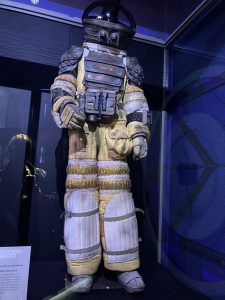Hi there,
This week, I made a commitment to some friends to finish rewriting my six-part TV series script, Tag, by 31 January 2023, and now I’m making the same promise to you. The 31st happens to be a Tuesday, so if I don’t announce in that morning’s newsletter that I’ve finished, you should feel free to harangue me by email or on any social media platform that’s not in flames by then.
Of course, my brain wants nothing to do with the whole endeavour, not least because I came up with a really good idea for a YA novel which feels to me like it has real commercial potential. All my brain wants to do is play with that idea instead. Bad brain.
But there’s no point starting if you don’t finish, so I’m going back to my “do at least five minutes a day” Atomic Habits promise, and will damn well get the thing done.
Win a copy of The Year in Space!
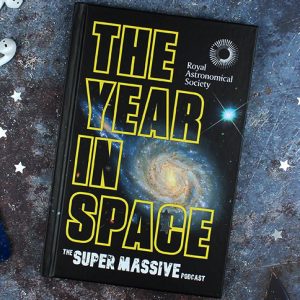 Would you like to win a copy of The Year In Space, written by Dr Becky Smethurst, Izzie Clarke, Richard Hollingham and Dr Robert Massey, the team behind the Royal Astronomical Society‘s Supermassive Podcast, the No 1 space podcast in the UK?
Would you like to win a copy of The Year In Space, written by Dr Becky Smethurst, Izzie Clarke, Richard Hollingham and Dr Robert Massey, the team behind the Royal Astronomical Society‘s Supermassive Podcast, the No 1 space podcast in the UK?
All you have to do is retweet this tweet from Ada Lovelace Day before 13:00 GMT on Monday 5 December, after which we will draw names from a hat.
The Year in Space highlights the most exciting space news from the past twelve months and looks forward to the year ahead. Packed with features, interviews, in-depth explainers and stunning photography, it covers everything from the deployment of the James Webb telescope to the search for extraterrestrial life and the effort to get astronauts back to the Moon. You’ll also find practical tips on how to get the best results when stargazing and what to look out for in the night sky in 2023.
Event: See Neil Gaiman in conversation, 5 Dec 22
 If you’re a Neil Gaiman fan, as I am, then you need to hotfoot it over to Eventbrite to pick up a ticket for next Monday’s Guardian Live Book Club event, when Gaiman will talk to Guardian books reporter Alison Flood about The Sandman.
If you’re a Neil Gaiman fan, as I am, then you need to hotfoot it over to Eventbrite to pick up a ticket for next Monday’s Guardian Live Book Club event, when Gaiman will talk to Guardian books reporter Alison Flood about The Sandman.
The Sandman comic series launched in 1989 and follows Dream who, after being held captive for 70 years, has to rebuild his now-decayed kingdom. In 2020, it was adapted into an audio drama with parts two and three coming out in 2021 and 2022. And it became a Netflix series this year with a second series now confirmed.
I discovered The Sandman when the graphic novel versions came out, mostly because I was always crap at remembering to buy individual issues of the comics I loved. It was also a time when I was a bit poor, so I ended up only owning issues 1-6 (plus an extra copy of book 6 for some reason), because I didn’t have the money to keep on collecting. Then that specific cover design was retired and I couldn’t bring myself to buy non-matching books. I guess I should just trawl through eBay for second-hand copies until I’ve completed the set.
This is an online event, with tickets starting at £7.92, so you can join from anywhere if you have the internet and are awake.
Tip-top tip: Let Bert’s Books help you find your comps
One of the worst bits, for me, of submitting a book to agents is working out what your ‘comps’, or comparable titles, are. Comps help agents work out where in the shop your book would be shelved and how they can sell it to readers. Whenever you see “If you’re a fan of X, you’re going to love Y”, that’s a comp.
I find deciding on comps really difficult, because when I’m writing something I avoid reading anything that might be even slightly similar. My comps for Disease X (for which I really need a better title) are:
- Station Eleven by Emily St John Mandel which I disliked so much I didn’t even finish it. I was delighted to get rid of it when we moved back to the UK.
- The Andromeda Strain by Michael Crichton which I read as a teen and still think is frankly a bit shit.
- Spillover: Animal Infections and the Next Human Pandemic by David Quammen. The only brilliant book of the bunch, this one’s non-fiction so not a natural shelf-mate for my novel. It is a damn good read though, I highly recommend it.
But now help is at hand! Artist and writer Richard Hall tweeted that Bert’s Books in Swindon will come up with a selection of comps for you.
Querying writers, are you struggling for comps? Contact @bertsbooks send them your synopsis, then buy a mystery selection of how many you want. The booksperts in store will curate comps for you and ship to the UK or internationally
#WritingCommunity #amquerying #writersoftwitter
I shall be doing this in January, because I clearly need it!
Review: The Island of Missing Trees by Elif Shafak
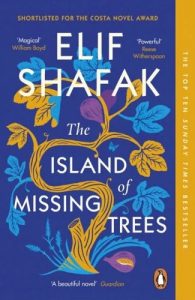 The Island of Missing Trees by Elif Shafak is one of the most beautifully written books I’ve read in a long time.
The Island of Missing Trees by Elif Shafak is one of the most beautifully written books I’ve read in a long time.
Defne, a Turkish Cypriot Muslim, and Kostas, a Greek Cypriot Christian, fall in love. They keep their forbidden relationship a secret throughout the worsening political turbulence with the help of the owners of a tavern in which a fig tree grows. But when violence erupts, Kostas is sent away to the UK, leaving Defne bereft. Many years later, their daughter has to come to terms with her mother’s death and heal the growing distance between her and her father, whilst she tries to understand her dual heritage.
Much of the story is told from the point of view of the fig tree, which observes not just the blossoming love between Defne and Kostas, but the entire history of the island. From the fig tree, as well as Defne and Kostas, we learn about the 1974 conflict between the Turks, Greeks and British (who still had a presence on the island after it gained independence from the UK in 1960).
Shafak treats her multiple storylines and the tragedy of the conflict with thoughtfulness and compassion and the result is a novel shot through with tenderness and poignancy. It’s a love story, but also a political story, a tragedy but also story of hope and reconciliation.
I didn’t know much about the history of Cyprus before I started reading, but Shafak provides enough background to create understanding, though never so much that it turns into a history book. Instead, the detail turns the island and its people into another core character, adding depth and richness to the narrative.
Review: A Deadly Education by Naomi Novik
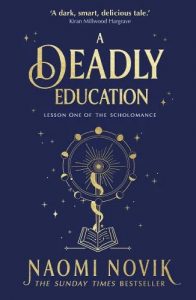 The first book in Naomi Novik’s Scholomance trilogy, A Deadly Education introduces us to the kind of heroine I can get right behind. El Higgins is a ridiculously powerful magician, but if she uses her gift to its full extent she could kill everyone trapped in school with her. But if she doesn’t use it at all, then she and a lot of other people will die at the tentacles/claws/maws of ‘mals’ – magical predators that lurk around every corner and under every desk.
The first book in Naomi Novik’s Scholomance trilogy, A Deadly Education introduces us to the kind of heroine I can get right behind. El Higgins is a ridiculously powerful magician, but if she uses her gift to its full extent she could kill everyone trapped in school with her. But if she doesn’t use it at all, then she and a lot of other people will die at the tentacles/claws/maws of ‘mals’ – magical predators that lurk around every corner and under every desk.
El Higgins is a defensive, emotionally bruised loner who doesn’t know how to make friends because she’s never had one. Despite everyone judging her by her cover, it turns out that El’s biggest secret power is not magical, it’s seeing people for who they are and treating them as individuals.
It’s always a joy to read two great books in a row, and I devoured A Deadly Education as fast as maw-mouth can eat a classroom full of tasty teens. It’s a huge amount of fun, a great page-turner, and has some smart stuff to say about how we treat other people and how easy it is to be blind to one’s own privilege because it’s always just been there.
Obligatory cat picture
A friend of mine sent over two cat caves, as his cats had spurned them. Our two were straight in. Copurrnicus seems to have decided that he owns both of them, mind you, but I am sure we will straighten that misunderstanding out in due course!
All the best,
Suw
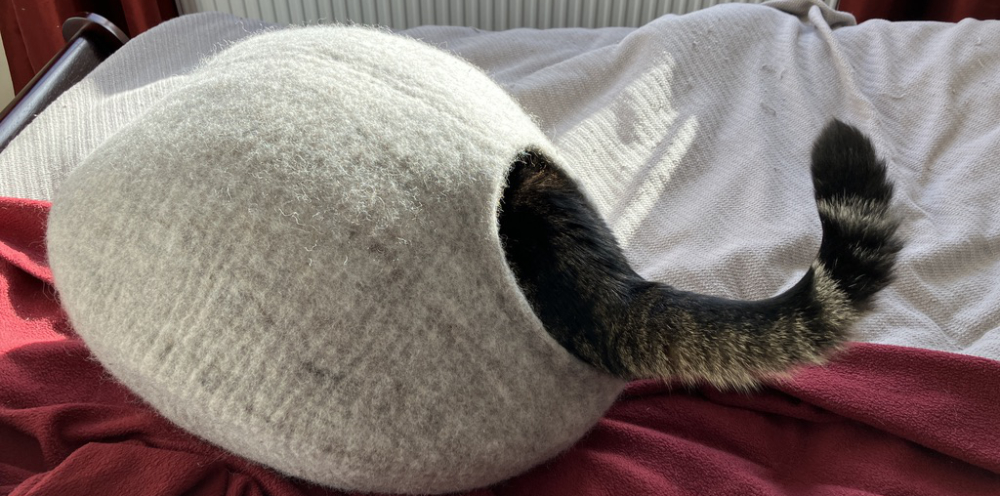
{ Comments on this entry are closed }
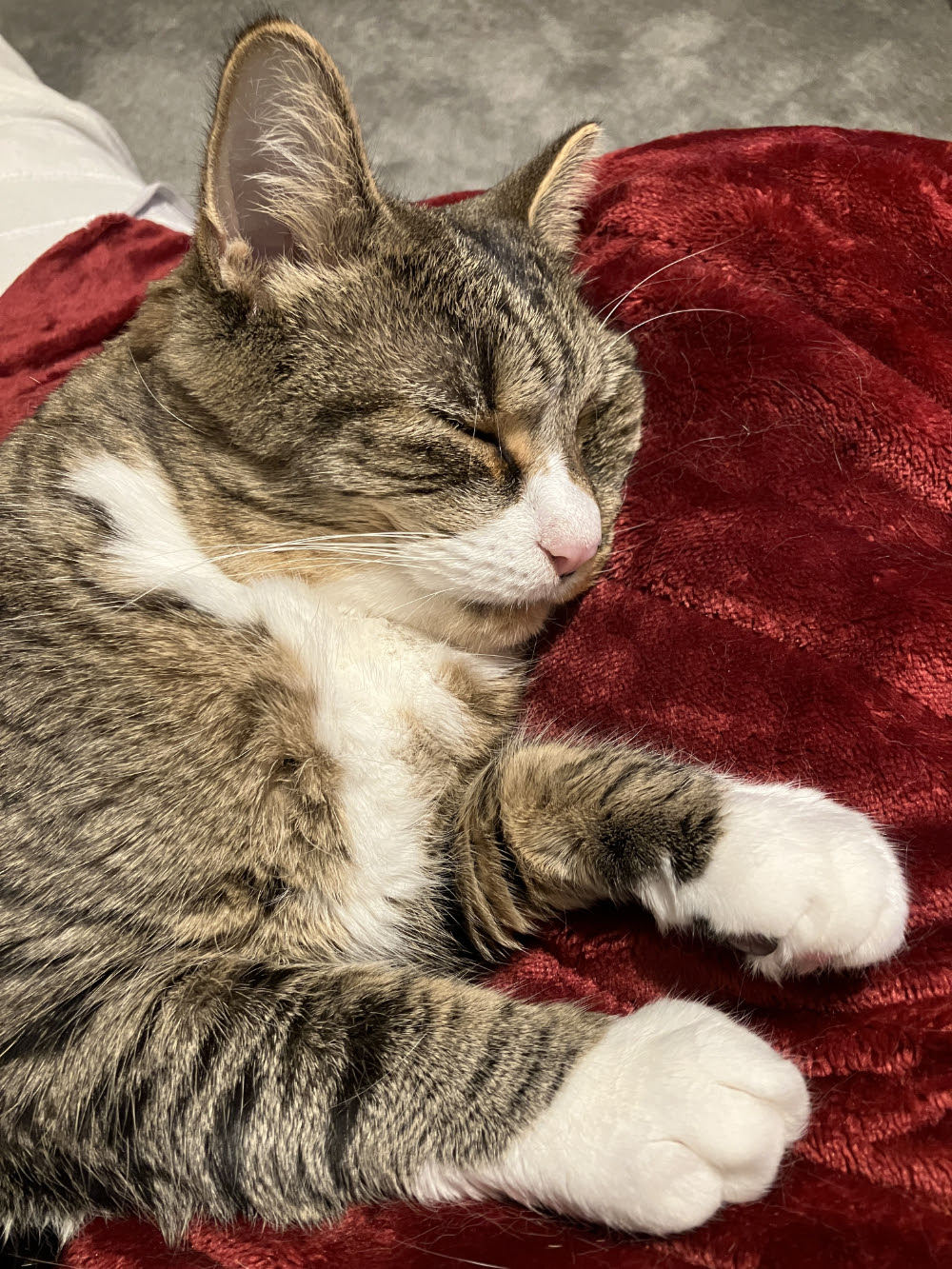 It’s always awful when a pet falls ill. I have a sneaking suspicion that Copurrnicus ate a slug or something else that he really shouldn’t have, because last Wednesday he started throwing up and his stomach liquified.
It’s always awful when a pet falls ill. I have a sneaking suspicion that Copurrnicus ate a slug or something else that he really shouldn’t have, because last Wednesday he started throwing up and his stomach liquified.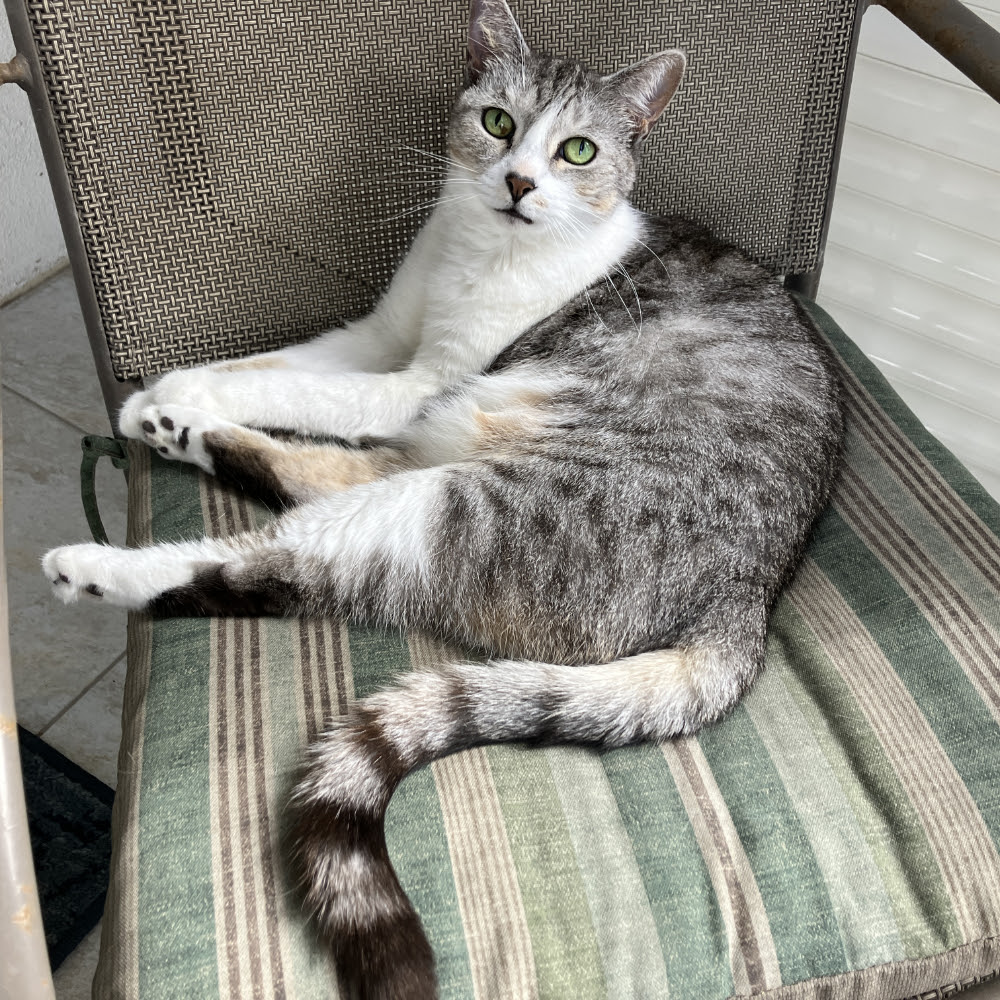 Our visit to Fort Myers was made delightful by Stella, our cousins’ eleven year old cat, who welcomed us with cuddles and purrs. She was very friendly, allowing us to pick her up for fusses. Despite having been traumatised by Hurricane Ian, she remained pretty chill throughout Nicole. Brave girl!
Our visit to Fort Myers was made delightful by Stella, our cousins’ eleven year old cat, who welcomed us with cuddles and purrs. She was very friendly, allowing us to pick her up for fusses. Despite having been traumatised by Hurricane Ian, she remained pretty chill throughout Nicole. Brave girl!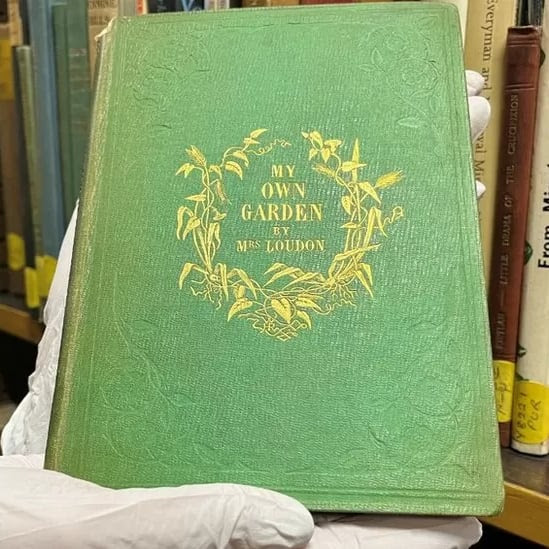
 Early in the film, Andy Dufresne (Tim Robbins) is given the Bible and told, “Salvation lies within” by Warden Norton (Bob Gunton). When Norton discovers the Bible after Dufresne’s escape, he finds the inscription “Dear Warden, you were right, salvation lay within” and the hollow where the rock hammer was hidden.
Early in the film, Andy Dufresne (Tim Robbins) is given the Bible and told, “Salvation lies within” by Warden Norton (Bob Gunton). When Norton discovers the Bible after Dufresne’s escape, he finds the inscription “Dear Warden, you were right, salvation lay within” and the hollow where the rock hammer was hidden.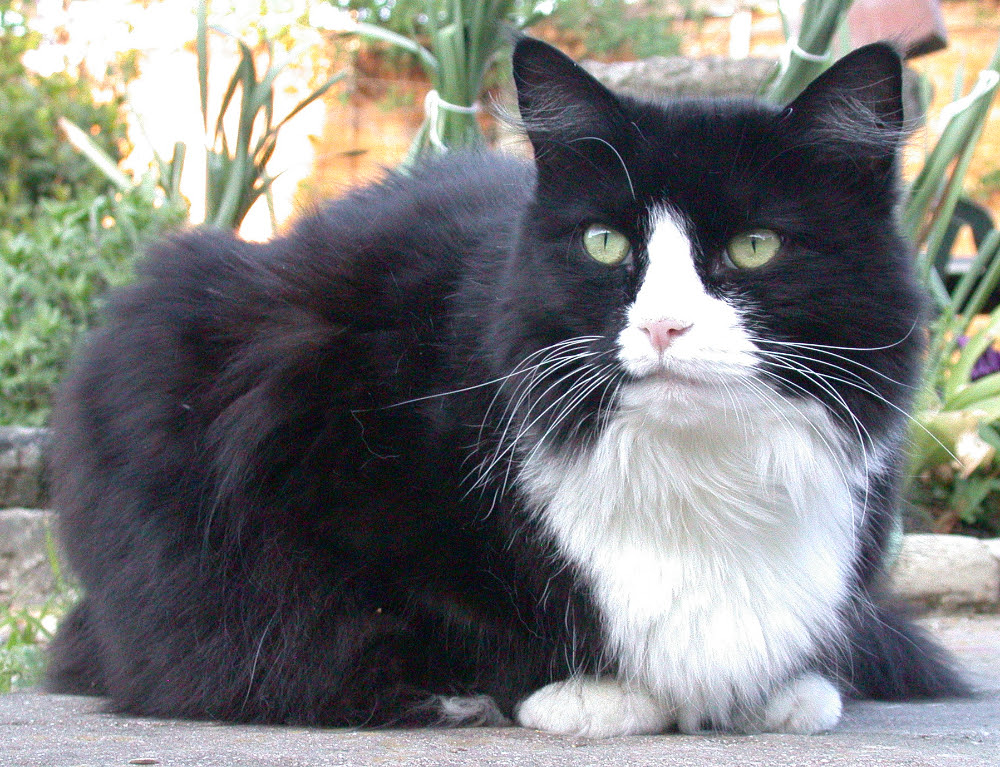 his week, I’ve dug back into my archives to find this photo of Fflwff from 2007. She adopted me when I lived in Reading just after the turn of the Millennium.
his week, I’ve dug back into my archives to find this photo of Fflwff from 2007. She adopted me when I lived in Reading just after the turn of the Millennium.
